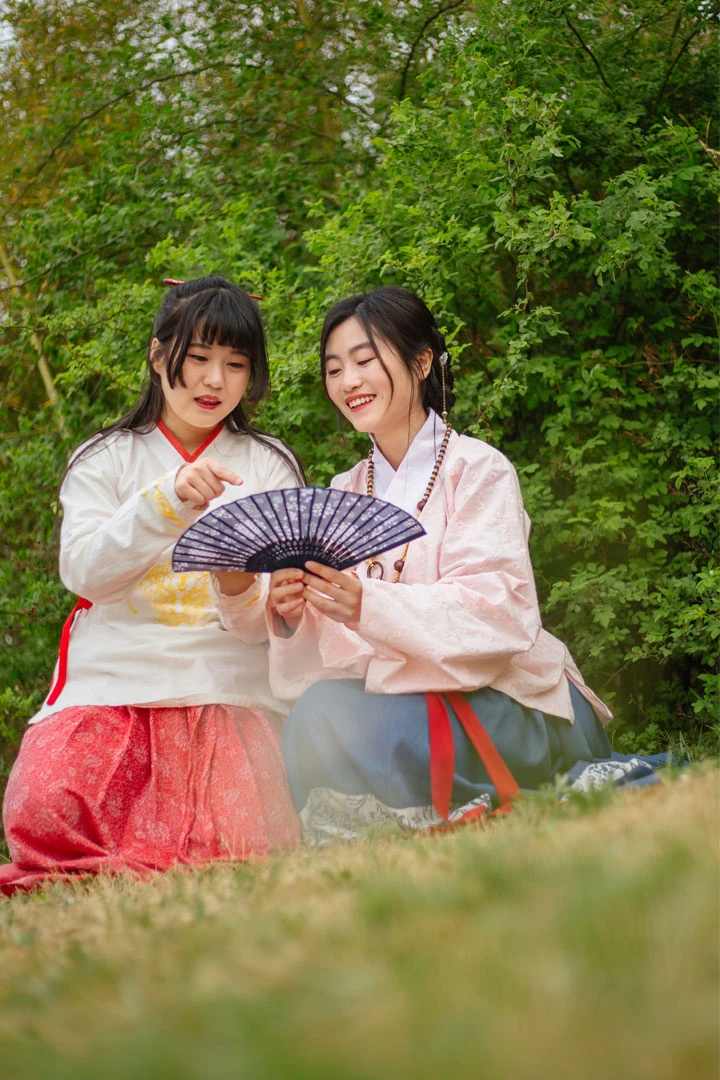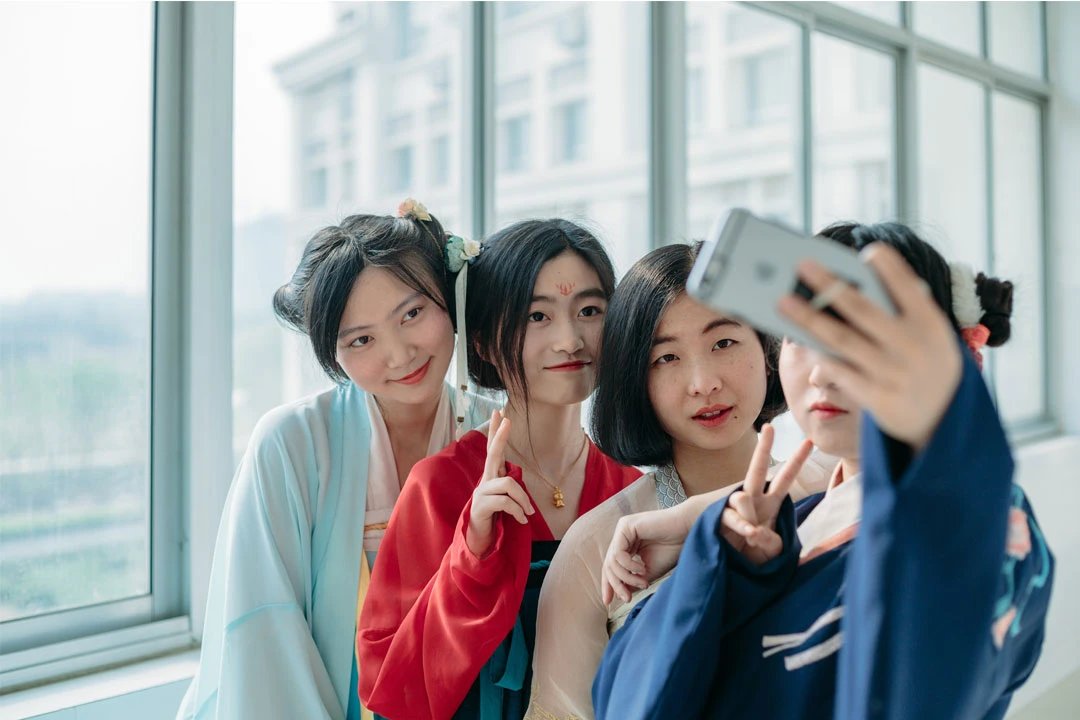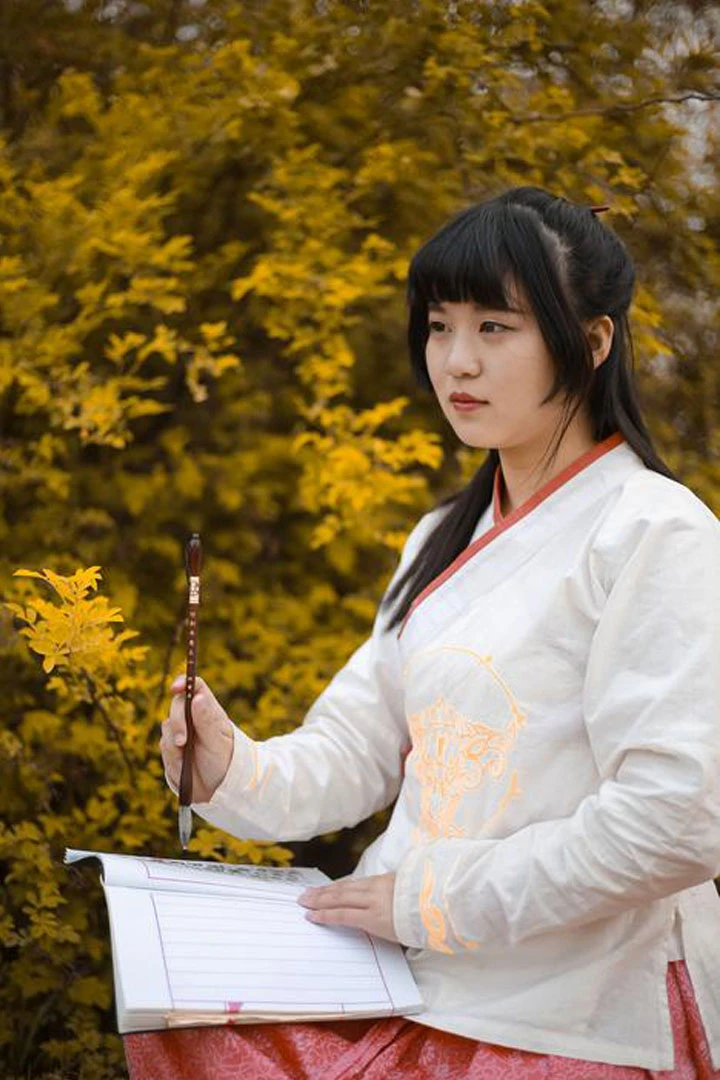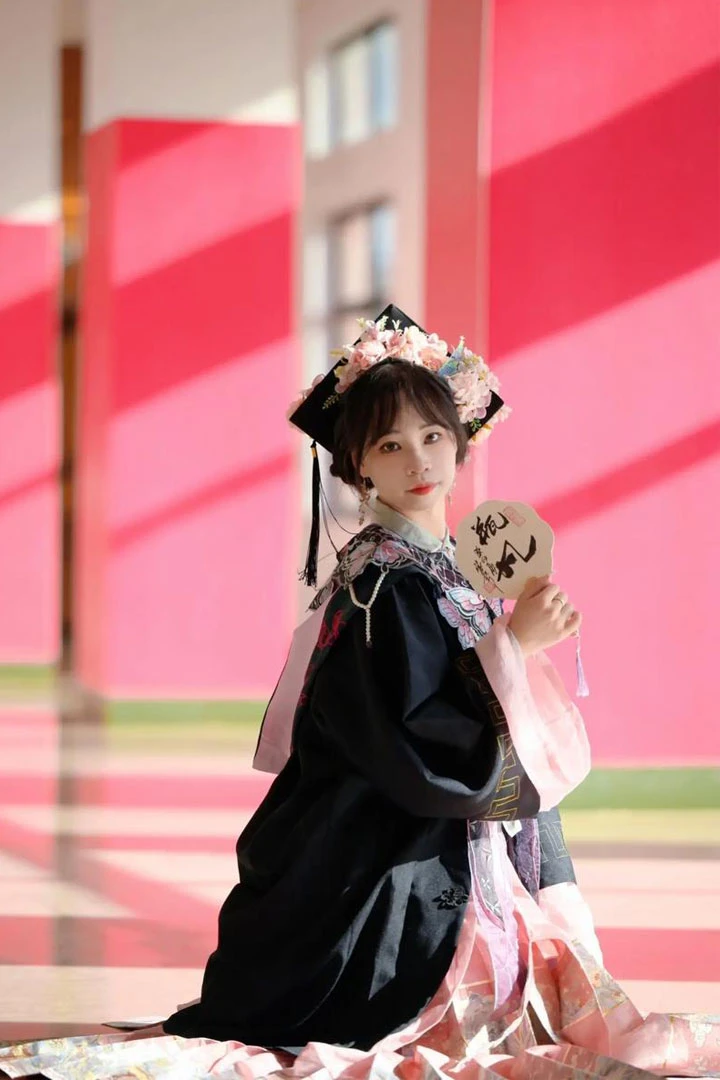In recent years, a captivating trend has emerged during graduation season across Chinese universities: the fusion of traditional Chinese fashion (Guofeng) with the formal academic regalia. This unique blend sees graduates adorning themselves with the iconic mortarboard adorned with hairpins, draped with floral-patterned embroidery, and walking gracefully through campus. Beneath their dark academic gowns, the edges of Hanfu skirts subtly peek out, adding a touch of elegance and fluidity to their attire.
The trend has gained widespread popularity among the younger generation, particularly represented by Generation Z, who are enchanted by this hybrid style. On social media platforms, many Chinese students studying abroad proudly showcase their "Guofeng graduation outfits," often accompanied by captions likening themselves to "Chinese princesses graduating." They meticulously select garments like the Ming-style horse-face skirt, combining embroidery and gold stamping, aiming to display the beauty of Chinese traditional clothing while abroad. Their attire not only garners attention but also evokes a deep appreciation for traditional culture.

The phenomenon of blending Guofeng with academic robes reflects a broader cultural movement where young Chinese individuals seek to celebrate their heritage while embracing contemporary influences. It signifies a growing trend towards cultural confidence and a desire to express identity through fashion choices that bridge past and present. This trend is not merely about aesthetics but also serves as a meaningful way for graduates to commemorate their academic achievements with a touch of cultural pride.
The integration of Guofeng elements into graduation attire also highlights the evolving nature of fashion and cultural expression. It demonstrates how traditional Chinese styles can be adapted and reimagined to resonate with modern sensibilities, appealing to a global audience while preserving their intrinsic cultural essence. This sartorial evolution speaks to a generation that values authenticity and creativity in fashion, where personal style becomes a canvas for cultural storytelling.
Moreover, the popularity of Guofeng during graduation season underscores its role as a cultural ambassador, promoting Chinese heritage and aesthetics to a diverse audience. It fosters cross-cultural dialogue and appreciation, encouraging individuals worldwide to explore and appreciate the rich tapestry of Chinese traditions beyond borders. As such, Guofeng not only serves as attire but also as a symbol of cultural diplomacy and exchange in a globalized world.
As the trend continues to gain momentum, it prompts discussions on the significance of cultural identity and the evolving perceptions of tradition in contemporary society. Critics may debate the authenticity of combining ancient attire with modern ceremonial dress, yet for many, it represents a harmonious blend of old and new, symbolizing continuity and innovation in cultural expression.
the fusion of Guofeng with academic regalia during Chinese graduation seasons represents more than just a fleeting fashion trend; it embodies a profound cultural statement. It reflects a generation's embrace of their heritage, a celebration of diversity in fashion, and a testament to the enduring allure of traditional Chinese aesthetics in a rapidly changing world. As graduates don these distinctive ensembles, they not only mark the culmination of their academic journey but also proudly showcase their cultural roots to the world.
The integration of Guofeng elements into graduation attire not only celebrates cultural heritage but also serves as a personal statement of identity and pride. For many young graduates, wearing Hanfu-inspired skirts or incorporating traditional embroidery into their outfits is a deliberate choice to connect with their roots and distinguish themselves in a sea of uniform academic attire.
Social media platforms play a pivotal role in amplifying and popularizing these fashion trends. Chinese students studying abroad often share their Guofeng graduation outfits, sparking admiration and curiosity among peers and followers worldwide. The visual impact of these ensembles transcends borders, fostering a global appreciation for Chinese aesthetics and craftsmanship.
Furthermore, the resurgence of Guofeng during graduation season is supported by a growing industry catering to traditional Chinese clothing enthusiasts. Designers and brands specializing in Hanfu and related styles have flourished, offering a wide range of garments that blend historical authenticity with modern design sensibilities. This burgeoning market not only meets the demand for ceremonial attire but also fuels creativity and innovation within the fashion industry.
The embrace of Guofeng reflects broader societal shifts towards cultural confidence and pride among Chinese youth. It signifies a reclaiming of cultural narratives and symbols that were once marginalized or overlooked in favor of Western influences. By integrating Guofeng into significant life milestones like graduation, young people assert their cultural identity and contribute to a global dialogue on diversity and inclusivity in fashion.
Moreover, the popularity of Guofeng in academic settings highlights its educational value in promoting cultural awareness and understanding. Universities and educational institutions have increasingly incorporated discussions on traditional Chinese attire into their curriculum, fostering a deeper appreciation for cultural heritage among students of diverse backgrounds.
The trend also intersects with broader movements advocating for sustainable and ethical fashion practices. Many enthusiasts of Guofeng prioritize craftsmanship and quality, often opting for handmade garments or supporting artisans who specialize in traditional embroidery and textile techniques. This emphasis on heritage and craftsmanship aligns with contemporary values of sustainability and cultural preservation.
As Guofeng continues to evolve, it faces challenges and opportunities in navigating cultural appropriation and authenticity. Critics argue about the commercialization of traditional attire and the need for respectful representation of cultural symbols. Yet, proponents argue that the global embrace of Guofeng promotes cultural exchange and understanding, transcending boundaries and fostering mutual respect.
Looking ahead, the future of Guofeng in graduation attire appears promising, driven by ongoing cultural revitalization efforts and increasing global interest in Chinese heritage. As more young people embrace Guofeng as a form of self-expression and cultural pride, its influence is likely to extend beyond graduation ceremonies into everyday fashion and cultural events worldwide.
In conclusion, the fusion of Guofeng with academic regalia during Chinese graduation seasons embodies a harmonious blend of tradition and modernity. It symbolizes a celebration of cultural heritage, personal identity, and creativity in fashion, resonating with a generation that values authenticity and diversity. As graduates proudly don these culturally rich ensembles, they not only commemorate their academic achievements but also showcase the beauty and resilience of Chinese traditions to a global audience.



